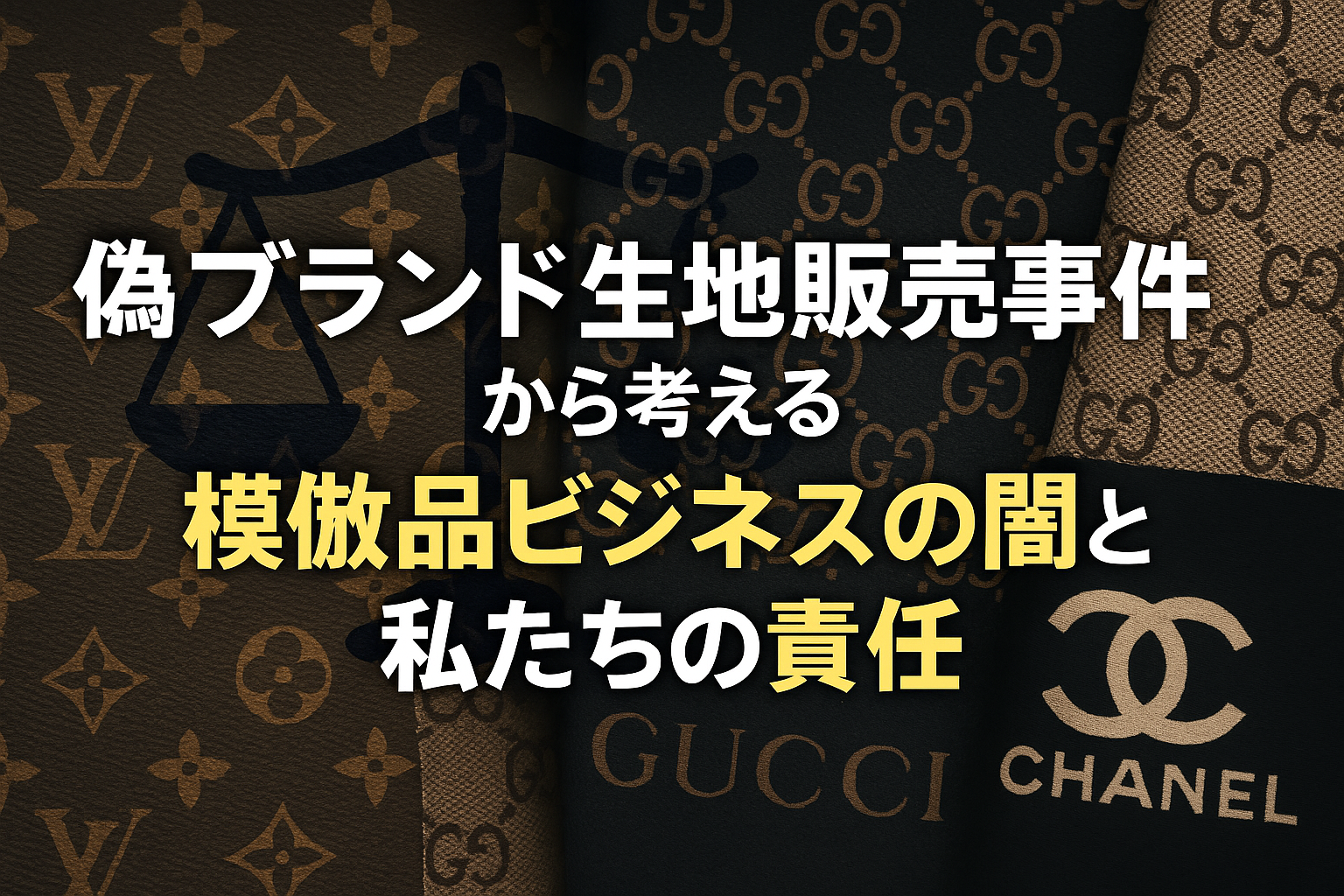In May 2025, a Chinese woman residing in Kyoto was referred to prosecutors for violating trademark law after being found in possession of and selling fabric printed with counterfeit logos of luxury brands such as Louis Vuitton. According to reports, she sourced the fake fabric from Chinese e-commerce sites and sold approximately 580 items through flea market apps in Japan, earning nearly 1.8 million yen.
At the heart of this case is the infringement of intellectual property under the guise of a “hobby” or “side job.” The suspect reportedly admitted, “I knew it was illegal,” indicating that her actions were not due to ignorance but were instead a deliberate, sustained effort to sell counterfeit goods. The widespread availability and ease of use of flea market apps in recent years have exposed the reality that such platforms have become breeding grounds for “amateur counterfeit businesses.”
This particular case draws attention to counterfeit materials, specifically fabric with fake logos, which are often overlooked as just “components.” The fact that trademark infringement at the material level—not just in finished products—is under scrutiny could influence future rule-making in the handmade goods market.
Consumers’ awareness is also being called into question. When an item is significantly cheaper than an official product, it’s important to ask why. Someone might think they’re buying a “cute handmade bag” on a flea market app, only to find out later that they unknowingly supported an act of intellectual property infringement.
A brand’s value is built over years of investment and the accumulation of trust. The circulation of imitation goods that exploit this value not only causes serious harm to corporate activities but also undermines the credibility of the entire culture and industry. This incident should serve as an opportunity for creators, sellers, and buyers alike to reconsider what constitutes a counterfeit product and how their actions might impact the broader ecosystem.

